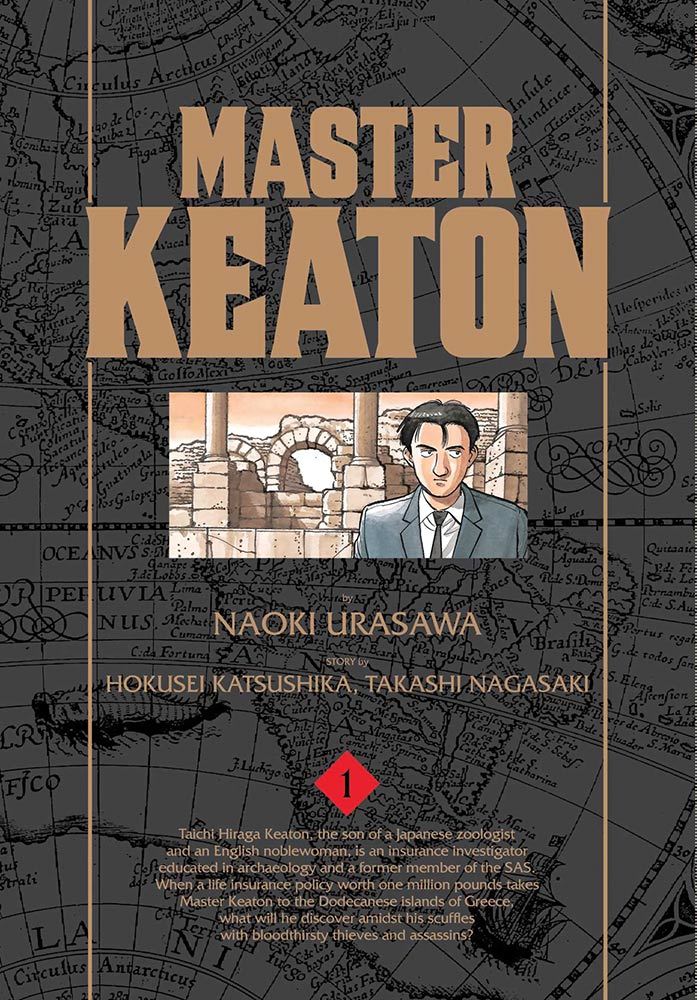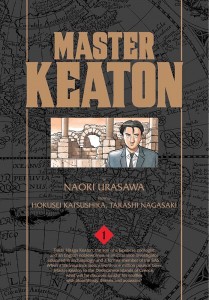By Naoki Urasawa, Hokusei Katsushika, and Takashi Nagasaki. Released in Japan by Shogakukan, serialized in the magazine Big Comic Original. Released in North America by Viz Media.
A long awaited release on these shores, this is the sort of title that you’d have expected to be licensed back in the old Viz days of the early to mid 90s, filled with Crying Freeman and Mai the Psychic Girl. The series had an anime in the 1990s, but by then the fashion for seinen had passed, and it’s taken a resurgence, helped by the cult popularity of 20th Century Boys and Monster, to see the series out here at last as a deluxe Signature edition. There’s also some question over the actual creation. When it came out in the late 80s, it was credited to Katsushika as the writer and Urasawa as the artist. After Katsushika’s death, Urasawa claimed that they’d fought early in the series, and from that point Urasawa did the story himself, a viewpoint which has led to some criticism. Also, the third author on the cover is the writer for the CURRENT Master Keaton revival, which started in 2012, and which… isn’t this. (As with many Signature releases of older works, this is a release of the Japanese re-release, which may have updated art/storylines.)
What is this, then? It’s been called “Indiana Jones manga”, but I’d compare it to another 80s icon, MacGyver. Taichi Keaton is a former SAS soldier turned freelance insurance investigator for Lloyd’s of London. He looks into wrongful death claims, art forgeries, and archaeological digs, all the while finding trouble and managing to maneuver his way out of it by virtue of his amazing survival skills. Sadly, he’s not nearly so competent in his personal live, being divorced and having a teenage daughter, Yuriko, who seems to find her father admirable and aggravating in equal measures.
I understand her frustration. Keaton is a man who it’s easy to admire but hard to like. His lax personality was highly popular at the time, and makes a nice change from, say, Golgo 13 (a series Katsushika also wrote for) or Crying Freeman. These days I think a reader might find it trying, especially his obsession with his ex-wife getting together with someone else (we never see the wife, and actually it occurs to me that Yuriko may have made the whole thing up to attempt to spur him into action). Later in the volume we see Keaton’s father, whose name he disavows (he takes his mother’s last name), and he’s also an eccentric, frustrating individual, who Keaton probably takes after more than he’d like. Keaton as a man seems mostly half-baked and half-hearted.
The series is on firmer ground with the mystery stories, which much of the time turn into spy stories. Master Keaton began in 1988, at the tail end of the Cold War, but feels more like an early 80s tale, with the Communists still exerting their hold behind the Iron Curtain. I wonder if we’ll see that change as the series went on – it lasted till 1994. The first few chapters are not fleshed out enough – Keaton is the sort of story that requires a bit of room to breathe, particularly with all the exposition, and it’s no surprise that it’s the multi-chapter works that are the best in the volume.
Master Keaton, in the end, is classic seinen. If I said this was a mystery series in Big Comic Original in the late 80s, the well-read manga fan would likely be able to predict precisely the types of stories you’d see here. But it’s very well-told, as expected from Urasawa, and when he’s not getting involved in personal business, Keaton makes an excellent investigator. I’ll definitely be picking up more.

